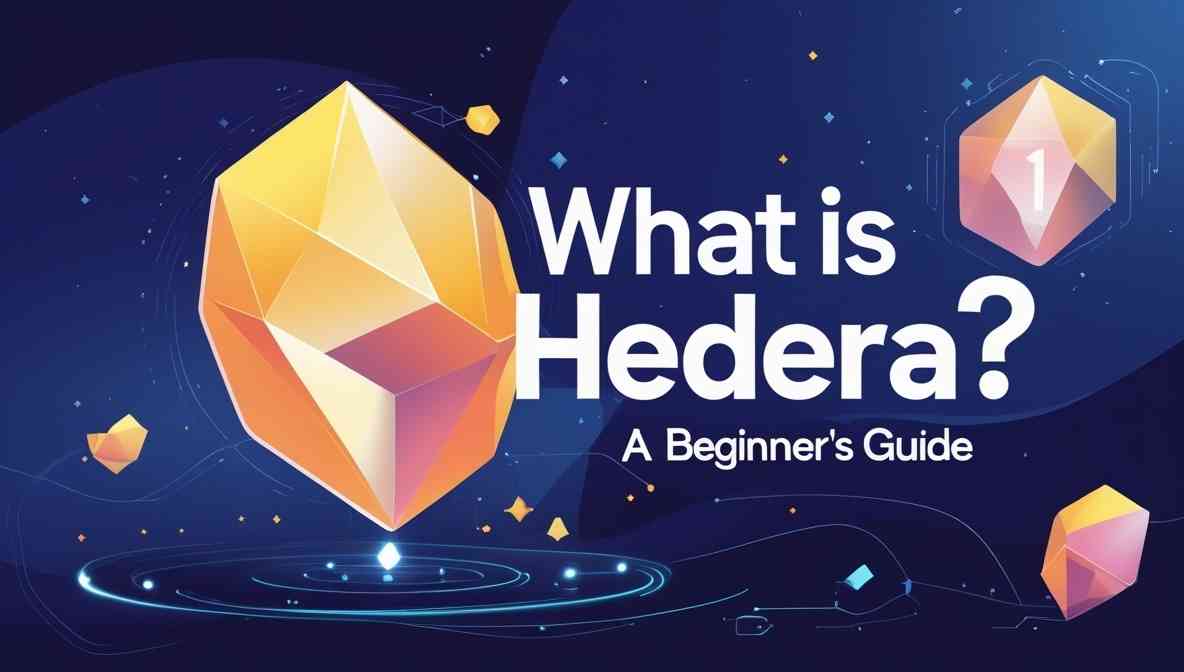If you’re stepping into the world of blockchain and digital assets, Hedera is a name you’ll likely come across. While Bitcoin and Ethereum dominate headlines, Hedera offers a unique and powerful alternative. This beginner’s guide will break down what Hedera is, how it works, and why it matters in the fast-evolving crypto space.
What is Hedera?
Hedera Hashgraph, commonly referred to as Hedera, is a next-generation public distributed ledger platform. Unlike traditional blockchains, Hedera uses Hashgraph consensus technology, which allows for lightning-fast transactions, low fees, and enhanced security. It’s designed to support decentralized applications (dApps) and enterprise-grade solutions.
Hedera is governed by a council of global enterprises including Google, IBM, Boeing, and Deutsche Telekom. This governance model ensures decentralization while maintaining stability and trust.
How is Hedera Different from Other Blockchains?
Unlike blockchains that store data in linear blocks, Hedera’s Hashgraph structure uses a Directed Acyclic Graph (DAG). This makes it:
- Faster: Capable of processing over 10,000 transactions per second (TPS)
- Fairer: No miners mean no front-running or transaction manipulation
- Greener: Extremely low energy consumption compared to Bitcoin or Ethereum
These attributes make Hedera ideal for real-time applications in finance, supply chain, healthcare, and more.
Core Features of Hedera
✅ 1. High Performance
Hedera offers high throughput with low latency, allowing dApps and enterprise systems to scale with ease.
✅ 2. Fixed Low Fees
Unlike Ethereum’s fluctuating gas fees, Hedera charges predictable fees—just a few cents per transaction.
✅ 3. Carbon-Negative Network
Hedera is among the few carbon-negative networks, making it a sustainable choice for eco-conscious developers and investors.
✅ 4. Smart Contracts 2.0
Hedera now supports EVM-compatible smart contracts, allowing developers to port over existing Ethereum-based projects.
Use Cases of Hedera
Hedera’s technology powers a wide range of applications, including:
- Supply Chain Tracking: Real-time tracking of goods with enhanced security.
- Digital Identity: Enabling secure and verifiable identity systems.
- Micropayments: Ideal for gaming, streaming, and content monetization.
- Tokenization of Assets: From real estate to art, Hedera supports seamless asset tokenization.
To learn how such projects are shaping the digital economy, explore our Cryptocurrency Insights Analysis.
HBAR: Hedera’s Native Cryptocurrency
HBAR is the utility token of the Hedera network. It is used for:
- Paying transaction and smart contract fees
- Staking for network security
- Rewarding node operators
HBAR is designed to fuel the network while incentivizing honest participation.
Why Should You Pay Attention to Hedera?
As the world looks for scalable, secure, and energy-efficient solutions, Hedera stands out among competitors. It’s not just for crypto enthusiasts—major companies are already using it for real-world applications. Are you interested in high-growth micro-cap blockchain projects similar to Hedera? Check out these insightful guides:
How to Get Started with Hedera?
🪙 1. Buy HBAR
Use trusted exchanges to purchase HBAR. Store it in secure wallets that support the token.
🧠 2. Learn the Ecosystem
Explore Hedera’s use cases, dApps, and developer tools. Stay updated on projects and community initiatives.
🛠️ 3. Build or Invest
Whether you’re a developer or investor, Hedera offers numerous opportunities for innovation and growth. Want to master decentralized tools? Explore our tutorial: Step-by-Step Guides to DeFi Platforms
Final Thoughts
Hedera is more than a blockchain—it’s a high-performance distributed ledger built for the future. With its innovative Hashgraph technology, green credentials, and enterprise backing, Hedera offers a compelling choice for those seeking speed, security, and sustainability.
As blockchain continues to evolve, Hedera is carving out a significant role. Whether you’re a beginner or a seasoned investor, understanding Hedera will give you an edge in the world of digital assets.
🔍 Frequently Asked Questions (FAQs)
❓What is Hedera in simple terms?
Hedera is a decentralized network that uses Hashgraph, not blockchain, to offer faster and cheaper transactions for applications.
❓Is Hedera better than Ethereum?
While Ethereum is more established, Hedera offers better speed, fixed low fees, and eco-friendliness, making it a strong alternative for certain use cases.
❓ How to Buy Hedera?
To buy Hedera (HBAR):
- Sign up on a crypto exchange like Binance, Coinbase, or KuCoin
- Verify your account
- Deposit funds via bank, card, or crypto
- Search for HBAR and place a buy order
- Store your HBAR in a secure wallet
Explore beginner investment insights here:
👉 Cryptocurrency Insights Analysis
❓ What Does Hedera Mean?
The term Hedera comes from Latin, meaning ivy. Symbolically, it represents growth, connectivity, and adaptability, which aligns with the network’s goal of scaling dApps securely and efficiently.
❓ What is Hedera HBAR?
HBAR is the native cryptocurrency of the Hedera network. It is used for:
- Paying transaction and service fees
- Powering smart contracts and dApps
- Staking and securing the network through proof-of-stake
❓ What is the Hedera Machine?
The term “Hedera machine” is not officially recognized but may informally refer to the nodes or computing infrastructure running the Hedera Hashgraph network, managed by the Hedera Governing Council.
Want more on promising crypto picks?
👉 Micro-Cap Blockchain Projects
❓ Hedera Ethereum – What’s the Connection?
Hedera and Ethereum serve similar functions but use different technologies. While Ethereum relies on blockchain and proof-of-stake, Hedera uses Hashgraph for faster and greener performance. Thanks to EVM compatibility, Ethereum dApps can now migrate to Hedera for better scalability and reduced fees.
Learn more on Ethereum improvements:
👉 Ethereum Blob Gas Fee
